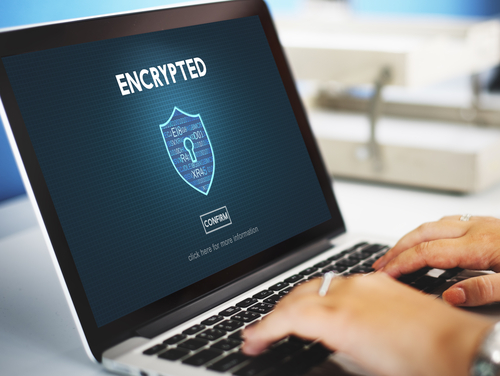If you use Apple products for exchanging emails either professionally or personally, you may be curious about the types of email privacy protection you have available. Apple provides a Mail Privacy Protection (MPP) feature to protect users’ data from prying eyes.
By enabling this function on your iPhone or Mac device, you can prevent email senders from tracking your email activity. Read on to learn about email privacy protection and how it can safeguard your personal and professional correspondence.

Why Do You Need Email Privacy Protection?
According to Title II of the ECPA or Stored Communications Act, privacy laws protect the content of stored files, billing records, and IP addresses. However, email eavesdropping is not illegal, and many marketing companies use this method to send targeted marketing to consumers.
Without you realizing it, these companies track your online activity via your email habits. Senders can connect you and your location to links you click within an email. They can also follow whether you opened an email they sent.
Companies use open rate data for their marketing purposes, which is how you get those specifically targeted ads popping up all the time. This eavesdropping is an invasion of your privacy and can make you feel uncomfortable using your email to communicate.
Some states have enacted laws against email eavesdropping, but this still doesn’t protect you against third parties “listening in” on your correspondence. Therefore, as you select an email client for your personal and professional correspondence, you should understand what email privacy protections these email clients can offer.
What is Apple’s Mail Privacy Protection?
Apple is arguably the largest big tech company on the market. According to Litmus, Apple Mail users make up a whopping 58.67% of email users worldwide. The other major competitors are Gmail, Microsoft Outlook, and Yahoo! Mail. So, more likely you or someone you know uses Apple Mail to correspond with others.
So, how can you guarantee your email client is protecting your email content while using their application? In September 2021, Apple’s Mail Privacy Protection (MPP) feature was released with the iOS 15 update to the Apple Mail app.
MPP hides your IP address, so senders can’t link you or your online activity to your exact location. It prevents senders from tracking emails you’ve opened and capitalizing off your online trends. You can use this feature on most Apple devices.
How Does Apple’s Mail Privacy Protection Work?
When a third party sends you email marketing through Apple Mail as a newsletter or a promotion, they attach spy pixels to the email content. These are in the form of imperceptible images that track your activity the moment an email opens.
These tracking pixels essentially spy on your conversations to learn about your shopping habits and other online trends through email campaigns. Also, if you click links within the email companies can match your IP address to the URL.
Your IP address gives the email sender lots of information about you, your location, interests, and purchase history. Most companies only gather this data to market to you. However, you can see how people with ill intent could misuse this eavesdropping.
Nefarious companies or disguised hackers could easily use data they collect from your email habits to scam you or steal your identity. No matter how companies use the data, email eavesdropping is still an invasion of your privacy.
Plus, these companies usually hire a service to track this information, which means more eyes are on your data. These marketing companies use click rates to determine how popular something is. Their email open rates are also a metric they employ to determine whether a campaign is successful or not.
Apple’s MPP is a solution to eavesdropping. This mail privacy protection feature uses a proxy server to remove any spyware from the email and send it to the recipient free of these tracking pixels. First, the email goes to Apple’s servers.
There the proxy downloads the content remotely. Then, when you click on the email to open it from the app, Apple’s server receives the download request, not the original sender. Essentially, Apple caches your downloaded emails on their servers.
This interception prevents open tracking pixels from identifying your exact location because they cannot connect to your IP address.
How Do You Enable This Feature on Your Apple Devices?
If you are using iOS15, iPadOS, or iOS16, you can easily turn on this feature. Follow these instructions:
- Go to the Settings app. It looks like a gear.
- Scroll down until you see the “Mail” app. Select it.
- Then, select “Privacy Protection.”
Note: You enable the feature by moving the slider to green. If you move the slider to gray, two other options become available: “Hide IP address” and “Block All Remote Content.” If you subscribe to iCloud+, you can also use “Hide My Email” to generate random email addresses to avoid sharing your email address when you fill out forms with companies with newsletters.
For Mac devices running with macOS Monterey, you can check to see if Mail Privacy Protection is turned on.
- Go to the Mail app.
- Choose “Settings.”
- Then, click “Privacy.”
- Here you can select Protect Mail Activity.
As with the iPhone, you can deselect this option and still select “Hide Your IP Address” and “Block All Remote Content” as separate entities. When you choose “Block All Remote Content,” you will receive a banner when you view the message. The banner will ask you whether or not to download the content.

Do Other Email Clients Have Similar Email Privacy Protections?
Apple’s MPP works on emails used through the app, including email services such as Gmail, Yahoo, and Outlook. So, as long as you are using an Apple device with an iOS 15 operating system or Apple’s new iOS 16, you can enable the mail privacy protection feature on any of your existing email accounts through the Apple Mail App.
However, if you are using an Android device, you will need to invest in some additional protections to ensure the privacy of your emails. The Gmail app on Android and iOS can stop images from automatically loading. Gmail prevents spy pixels from getting a lock on you. With this security measure, it still isn’t as effective as the Apple MPP.
Here is how you enable this feature using the Gmail app:
- Tap on the Menu icon.
- Select “Settings.”
- Choose your account name.
- There should be an “Images” category. Here, choose “Ask before displaying external images.”
- In this space, you can also block or unsubscribe to email lists.
Other email service providers may have similar features on their apps. You need to enable these features if you want to further protect your email account.
Does Apple’s Mail Privacy Protection Provide Enough Data Protection?
MPP is a privacy change that protects mail activity better than in the past. But it does have its limitations. MMP does not protect sensitive data or files that you send via email. So, if you are sending legal documents, financial information, logins, or other sensitive content via email, MPP will not protect them.
Users can install S/MIME certificates to encrypt their emails on their Apple Mail client, but S/MIME can be a complex process that takes up too much time for people who need to send lots of sensitive information via email quickly. It can also be too difficult for many casual users.
So, although Apple Mail does offer some great options for secure mail, it isn’t perfect. Apple’s MPP is also not impervious to attacks. iCloud is end-to-end encrypted (EE2E), but the mail client only has a small amount of email protection.
Although Apple MPP offers a significant first step in safeguarding your correspondence, additional protection can further secure your email.
Other Types of Email Privacy Protection
If you want extra email privacy protection, search for an email client that offers easy-to-use and data-encrypted email solutions. There are many email clients to choose from that offer various levels of security in different pricing ranges.
If you are a business, you may consider looking for an email client to provide data encryption to protect your customers’ and employees’ sensitive information. They can also secure your files, attachments, and network.
Personal users may also want to find a better way to keep others from interfering with their private communications. There are several types of encryption protocols used by popular email clients to secure your information. Here are a couple of the top ones:
Pretty Good Privacy (PGP)
Servers communicate with each other using keys. These can be either public or private. With PGP, the protocol uses a pair of asymmetric keys and symmetrical keys to encrypt your data. This protocol can be difficult to use, but it is a long-lasting and secure way of encrypting your emails.
Secure/Multipurpose Internet Mail Extensions (S/MIME)
As mentioned earlier, S/MIME encryption is certificate-based encryption that many email clients, including Apple products, have available. For this type of encryption, you encrypt both your message and a digital signature.
You exchange public keys with your recipient. Then, the recipient has a private key that will unlock the message once it is delivered. This protocol works well, but it can be time-consuming to use and expensive for non-Apple users.
Secure Sockets Layer (SSL)
SSL is an older encryption protocol, but some companies still use it. This method verifies identities while the message is in transit. It checks that third parties have not tampered with the content. This encryption method prevents eavesdropping while the message is en route to its destination.
SSL is a decent encryption protocol, but it doesn’t prevent hackers from getting your information when the email is delivered to the recipient.
Transport Layer Security (TLS)
TLS protocols are an update of SSL. TLS protects content from eavesdropping, tampering, and forgery. It encrypts email during transit to keep third parties from accessing it. Then, the server decrypts the email upon arrival at its destination. This method keeps your recipient from having to authenticate themselves to read the message.
End-to-End Encryption (EE2E)
EE2E is the most state-of-the-art encryption level on the market today. Financial institutions often use this military-grade encryption to protect the most sensitive information. EE2E protects email correspondence by scrambling the content so only authorized users can read it.
This type of encryption encrypts the data immediately after you hit send, during transit, and upon delivery. Authorized users can only decrypt the encrypted content when it is successfully delivered from the server.
How Sekur Can Take Your Email Privacy to the Next Level
If your business deals with private documents and sensitive files, you need email privacy protection. Your email security is a priority here at Sekur. We offer encrypted, Swiss-hosted email, VPN, and instant messaging on a 100% private platform.
With SekurMail you can send encrypted emails outside of Sekur and get replies within the secure environment. You can send unlimited-size attachments and use our easy email migration tool to help you to transfer your existing emails to our safe server.
Our VPN keeps you anonymous online with a Swiss IP address, and we offer military-grade, end-to-end encryption that gives your peace of mind. Since this is a 100% company-owned infrastructure, you don’t have to worry about data mining or big tech companies.
We offer private communications that are easy to use for both businesses and individuals.
Conclusion
Email privacy protection is an essential part of safeguarding your business and personal correspondence. Appl Mail Privacy Protection gives you a solid layer of protection against eavesdroppers and marketing spy pixels. Enabling this feature is easy and simple if you use Apple devices for your email.
If you don’t use Apple or are looking for additional email privacy protection, you may want to shop around. The best email client will offer you end-to-end encryption that protects your files, attachments, and email content fully.
Whether you are sending emails privately or from your office, you want to know that your email client is protecting your data with innovative encryption and privacy practices.

